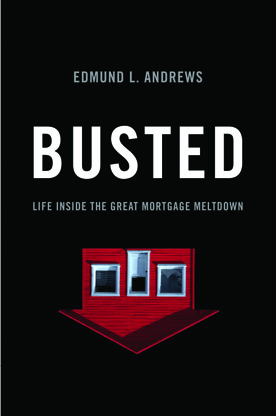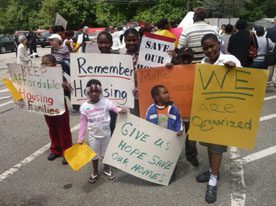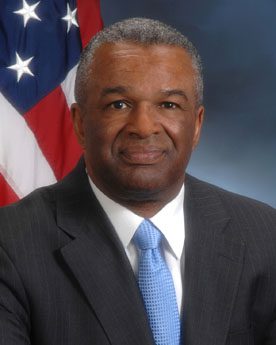Six months prior to the crisis, subprime lending, and its correlation with foreclosure and race, was an issue for which we had trouble garnering attention. But then all of a sudden, it was a hot topic, with our registration (and media interest) soaring in the days leading up to our event.
Now, going into 2010, it’s hard to imagine that it’s only been just over a year since the economic impact of our nation’s housing crisis became clear to many Americans, producing a series of drastic economic aftershocks that shook the domestic and global economies. The Troubled Asset Relief Program, Fannie Mae and Freddie Mac, CRA, Bear Stearns, subprime loans, and mortgage securities dominated the news, the final months of the presidential campaign and went from obscure topics to dinner table conversation.
From the perspective of trying to generate support to address the housing needs of our nation’s most marginalized communities, this newly found interest was refreshing. Fair housing advocates had been talking for years about the predatory nature of subprime lending in marginalized communities, but few would listen to these concerns. But as the crisis unfolded and information or misinformation was spread, we became wary of the narratives being told regarding the housing crisis, especially as these narratives related to discrimination in and solutions for marginalized communities.
Given the turmoil, confusion and uncertainty of the past year many authors have tried to contextualize, translate and understand the housing crisis and decode some of the mystery of a crisis that created turmoil from the inner city to the world’s great capitals of finance, impacting us all to some degree. If you search, “subprime crisis” on Amazon.com, over 870 books are identified, a similar search for “housing crisis” produces more than 4,000 titles for review. Among the vast number of books released on the housing crisis, three titles stand out and should be read for those trying to understand the housing crisis, its origins and what it means about the future of housing, affordable housing and fair credit.
Dan Immergluck’s Foreclosed: High-Risk Lending, Deregulation, and the Undermining of America’s Mortgage Market (Cornell University Press, 2009) provides a detailed historical overview of the evolution of US mortgage markets during the New Deal era, to the era of deregulation/securitization, the emergence of the high risk loan products and the sudden growth of the high risk loan market. The chain of events resulted in a dual credit market (high risk and low risk) for homeowners (Immergluck does not use the subprime terminology). Foreclosed presents a thorough body of evidence which illustrates that ample warnings should have been evident leading into the 2007-2008 housing crisis, but these warnings were ignored and were not reflected in policy. Foreclosed also clearly points out the important role for government in both the emergence of the mortgage market and in assuring its sustainability, a role that has diminished (to our peril) in the decades leading up to the crisis.
Alyssa Katz’s Our Lot: How Real Estate Came to Own Us (Bloomsbury USA, 2009) also presents a historical view of factors leading to the housing crisis, intertwined with her first hand experience in hard hit neighborhoods. Katz focuses on the federal government’s longstanding push for encouraging homeownership, going back as far as the Hoover administration. Her analysis places emphasis on the nexus between Clinton administration policies that aimed to expand homeownership for low-income Americans and continued deregulation for the financial industry. This interaction created a great imbalance, setting up low-income families and neighborhoods to lose out. “The scheme was mind-blowingly na�ve,” Katz writes. It was “a vestige of a more innocent time not long ago when it was possible to believe that the fixed income managers of Lehman Brothers and cashiers who couldn’t even save for a down payment would both profit by doing business together — on terms set by one side, infinitely wealthier and more powerful than its partner.”
Katz’s prose is strongest when she’s exploring the direct impact on communities from the devastation created by the crisis in places like Cleveland, and the speculation or real estate manipulation which helped spur the housing crisis (and affordability problems) in many markets, but most notably along the coasts and in the Sun Belt.
Edmund Andrew’s Busted: Life Inside the Great Mortgage Meltdown (W.W. Norton & Company, 2009) differs significantly from the Katz’s and Immergluck’s titles, presenting a compelling first-person view of his experience signing into an unaffordable subprime loan which brought his family to the verge of foreclosure and financial ruin. Starting a new life after a divorce and with the aid of a mortgage broker who understood his “unusual situation,” Andrews, with the full assistance of the mortgage broker took out a loan for $460,000 for which he didn’t have to report his income. Andrews, like so many borrowers, banked on optimistic economic hopes for his new family and assumed that refinancing would save him before the mortgage reset. Andrews interweaves his personal account with interviews and an overview of more recent actions on both Wall Street and by the Federal Reserve that exacerbated the crisis (placing emphasis on the role of former Federal Reserve Chairman Alan Greenspan in contributing to the crisis).
The irony of someone as knowledgeable and affluent as Andrews, an economics reporter for The New York Times who earned a six-figure salary, being locked into a subprime loan is compelling. Also, his failed attempts to negotiate with his lender (Chase) provide for a frightening validation of the many complaints from borrowers who found lenders unresponsive to negotiating solutions. If someone as knowledgeable as Andrews falls prey to subprime lending, what does that say about the challenges faced by less informed borrowers, or those borrowers who were actively sought out and targeted by predatory lenders? While Andrews fully admits that he was well aware of the risk involved, these less experienced borrowers did not have his knowledge and were placed in a position of great vulnerability — a fact supported by the great racial and geographic disparities in where subprime loans were concentrated. Andrews touches on this fact at the end of his book when he writes: “Mortgage lenders had aimed their most baffling products at the consumers who were least likely to understand them.”
In our review of these three books, and reflecting on our work in this field, several key themes emerged between the various books. These themes are critical for both those trying to understand the housing crisis and those looking to reshape housing policy in the future.






Thank you so much for sharing this interesting post. auto insurance quote
This is a huge problem that we really need to get a handle on. I think the blame should land on the banks and not the people because its the banks that make the loan decision.
Thanks Claudia Mayer
Florida Immigration Lawyer
This is one of the good articles you can find in the net explaining everything in detail regarding the topic. I thank you for taking your time sharing your thoughts and ideas to a lot of readers out there. Beertender B95
Now, going into 2010, it’s hard to imagine that it’s only been just over a year since the economic impact of our nation’s housing crisis became clear to many Americans, producing a series of drastic economic aftershocks that shook the domestic and global economies. Spy PhoneTroubled Asset Relief Program, Fannie Mae and Freddie Mac, CRA, Bear Stearns, subprime loans, and mortgage securities dominated the news, the final months of the presidential campaign and went from obscure topics to dinner table conversation.
I think that is inhumane… We all deserve to live… and while we live, we should do things that are beneficial like doing something profitable to support our family… like me, I conduct a phone sales training program not just for myself but to help other people succeed in telemarketing.
Fantastic Topic to discus,I think everyone had the ability to spend his life with it’s own way.It’s up to the person,he done good or wrong.Thanks for the information.I also visit your site in future for more details.
https://avointyopaikka.fi/